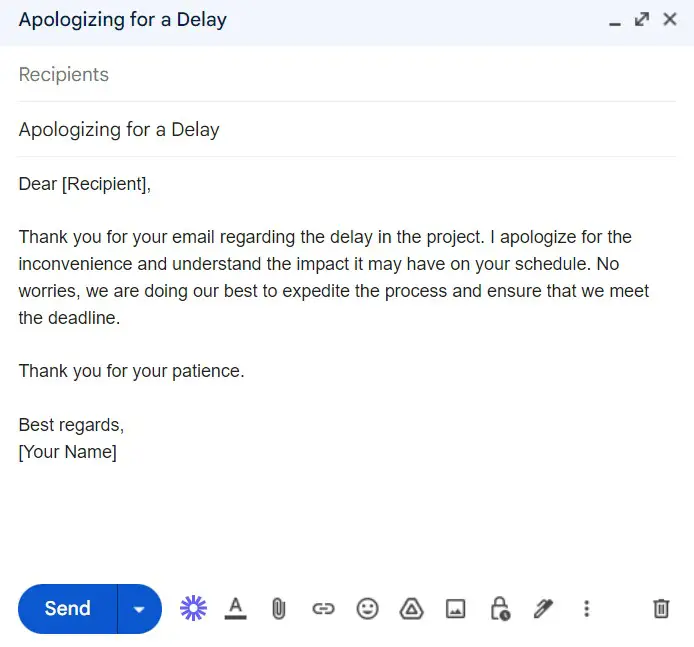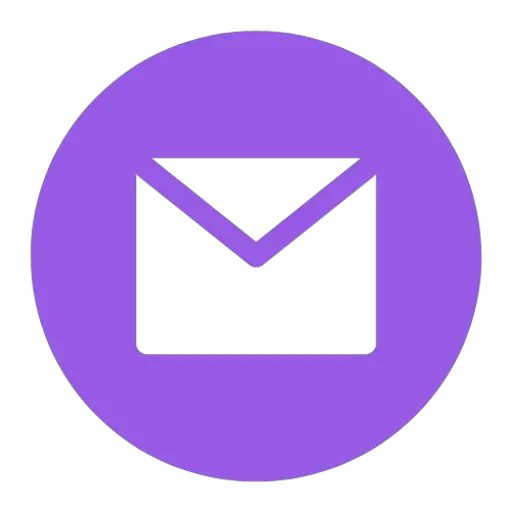In professional communication, acknowledging mistakes or misunderstandings is crucial to maintain good relationships.
One way to express reassurance and show understanding is by using the phrase “no worries.”
In this article, we will discuss the appropriate use of this phrase, provide examples of how to use it in different scenarios, and suggest alternative phrases to use in similar situations.
Contents
- How to Use “No Worries” in an Email
- “No Worries” Email Examples
- Example 1 – Subject: Apologizing for a Delay
- Example 2 – Subject: Acknowledging Misunderstanding
- Example 3 – Subject: Confirming Availability
- Example 4 – Subject: Expressing Reassurance
- Example 5 – Subject: Acknowledging Mistake
- Example 6 – Subject: Confirming Receipt of Information
- Example 7 – Subject: Offering Assistance
- Example 8 – Subject: Acknowledging Change in Plans
- Example 9 – Subject: Responding to Feedback
- Example 10 – Subject: Confirming Action Taken
- Alternative Ways to Say “No Worries” in an Email
How to Use “No Worries” in an Email
“No worries” is a phrase that can be used to express reassurance or understanding when someone expresses concern or apologizes for a mistake.
It’s appropriate to use this phrase in the following situations:
- When someone apologizes for a mistake, misunderstanding, or inconvenience
- When someone expresses concern or worries about something
To make your email more effective, you can add a sentence or two to show empathy or offer assistance if necessary. For example:
- No worries. I understand that these things happen, and I appreciate you taking the time to address the issue.
- No worries at all. I’m here to help, and I will do my best to assist you in any way possible.
“No Worries” Email Examples
Here are ten email examples that demonstrate how to use the phrase “no worries” in different scenarios:
Example 1 – Subject: Apologizing for a Delay
Dear [Recipient],
Thank you for your email regarding the delay in the project. I apologize for the inconvenience and understand the impact it may have on your schedule. No worries, we are doing our best to expedite the process and ensure that we meet the deadline.
Thank you for your patience.
Best regards,
[Your Name]
Example 2 – Subject: Acknowledging Misunderstanding
Dear [Recipient],
Thank you for bringing the misunderstanding to my attention. No worries, I’m here to clarify any confusion and ensure that we are on the same page. Let me know how I can assist you further.
Thank you for your communication.
Best regards,
[Your Name]
Example 3 – Subject: Confirming Availability
Dear [Recipient],
Thank you for your email regarding the meeting. No worries, I’m available on [date and time]. I look forward to discussing [topic of the meeting] and finding solutions together.
Thank you for the invitation.
Best regards,
[Your Name]
Example 4 – Subject: Expressing Reassurance
Dear [Recipient],
Thank you for your email expressing your concerns. No worries, I understand your worries and will do my best to address them. Let’s work together to find a solution that works for everyone.
Thank you for your honesty.
Best regards,
[Your Name]
Example 5 – Subject: Acknowledging Mistake
Dear [Recipient],
Thank you for bringing the mistake to my attention. No worries, I understand the impact it may have had, and I will take immediate action to correct it. Let me know if there’s anything else I can do to assist you.
Thank you for your cooperation.
Best regards,
[Your Name]
Example 6 – Subject: Confirming Receipt of Information
Dear [Recipient],
Thank you for your email and the information you provided. No worries, I confirm the receipt, and I appreciate your prompt response. I will review the materials and get back to you if I have any further questions.
Thank you for your attention to this matter.
Best regards,
[Your Name]
Example 7 – Subject: Offering Assistance
Dear [Recipient],
Thank you for your email and your request. No worries, I’m here to help, and I will do my best to provide the assistance you need. Let me know if you have any other concerns or if there’s anything else I can do to support you.
Thank you for reaching out.
Best regards,
[Your Name]
Example 8 – Subject: Acknowledging Change in Plans
Dear [Recipient],
Thank you for your email regarding the change in plans. No worries, I understand the situation, and we can reschedule the meeting to [new date and time]. Let me know if this works for you.
Thank you for your flexibility.
Best regards,
[Your Name]
Example 9 – Subject: Responding to Feedback
Dear [Recipient],
Thank you for your email and the feedback you provided. No worries, I appreciate your perspective, and I will take your comments into consideration to improve our processes. Let me know if you have any other suggestions or concerns.
Thank you for your constructive criticism.
Best regards,
[Your Name]
Example 10 – Subject: Confirming Action Taken
Dear [Recipient],
Thank you for your email and bringing the issue to my attention. No worries, I have taken the necessary steps to resolve the problem, and I will ensure that it doesn’t happen again. Let me know if you have any further concerns or questions.
Thank you for your cooperation.
Best regards,
[Your Name]
Alternative Ways to Say “No Worries” in an Email
While “no worries” is a common phrase used in professional emails, there are alternative ways to convey the same meaning.
Here are some examples:
- It’s not a problem, and I’m happy to help.
- Don’t worry, we can find a solution together.
- Thank you for your concern, and I appreciate your communication.
- I understand your worries, and I will do my best to address them.
Using the phrase “no worries” in your emails can help express reassurance and show understanding.
Remember to personalize your email and add a sentence or two to provide empathy or offer assistance if necessary.
If you want to vary your language, try using alternative phrases with similar meanings. With these tips, you can improve your email communication and maintain strong professional relationships.


